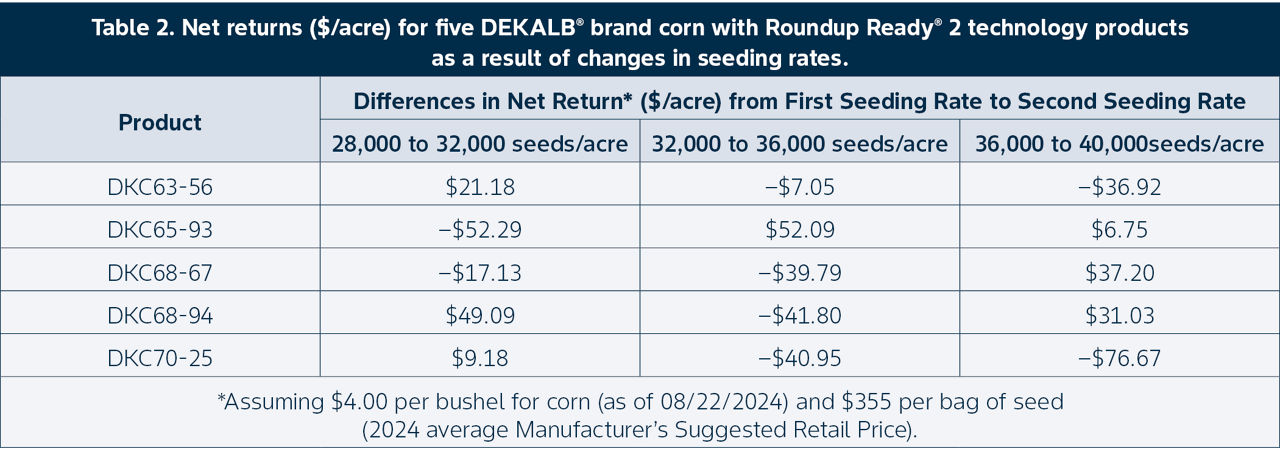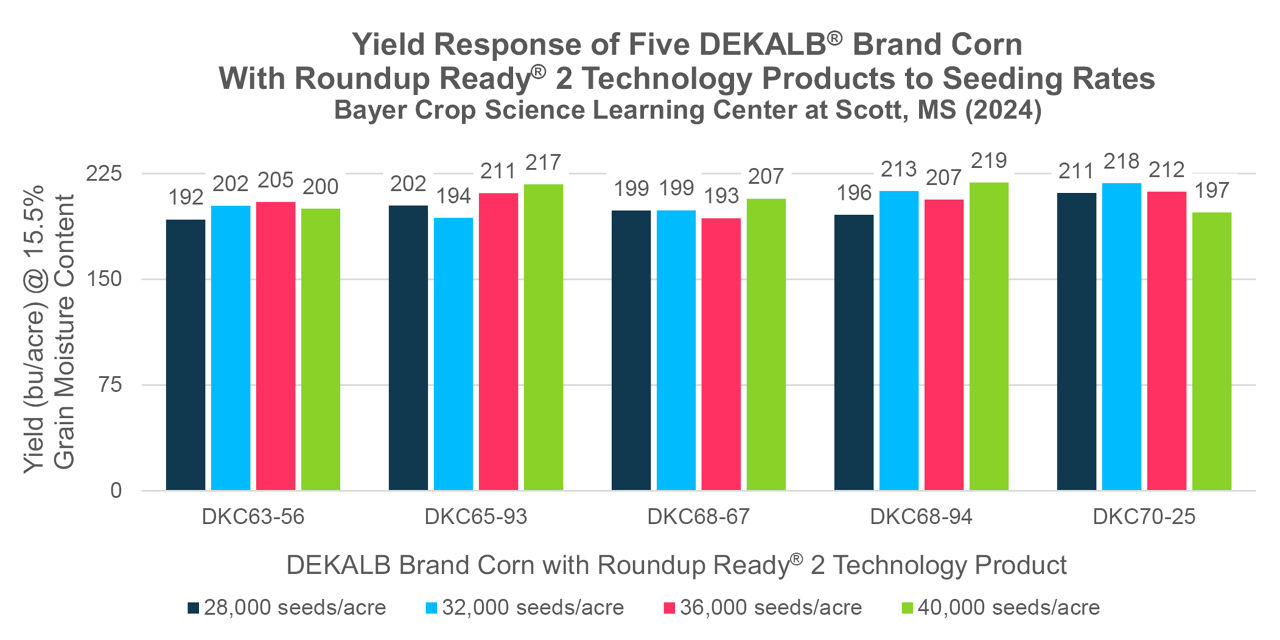10 MIN READ
Influence of Four Seeding Rates on Five DEKALB® Brand Corn With Roundup Ready® 2 Technology Products
December 16, 2024
TRIAL OBJECTIVE
- In mid-Southern crop production systems, growers must plant a refuge area of corn products lacking insect control traits when using corn products that have insect control technologies such as Trecepta® corn, VT Triple PRO® corn, or VT Double PRO® corn.
- Corn products used on refuge acres require the same management decisions at and during planting as products with insect control technologies.
- Selecting seeding rates for refuge products remains one of the most important management decisions growers need to make when planting corn. The Bayer Crop Science Learning Center at Scott, MS does an evaluation of planting population each season.
- Growers need answers to several common questions, including:
- If I plant more seeds per acre, will I get higher yields?
- If I increase the seeding rate, might I increase the risk of lodging?
- Does an increase in plant population provide a positive return on investment?
RESEARCH SITE DETAILS

- Experimental design was a single-replicate strip trial.
- Plot size was approximately 1.0 acre per treatment.
- 12 rows (30 feet) per treatment.
- Seeding rates (seeds per acre)
- 28,000
- 32,000
- 36,000
- 40,000

- Field operations including tillage and herbicide applications were per local standards.
- Return on investment (ROI) in dollars per acre ($/acre), was calculated using the following values:
- $4.00 per bushel grain price for corn (as of 08/22/2024)
- $355.00 per 80,000 kernel bag ($4.40 per 1,000 kernels) of Roundup Ready® 2 Technology corn products seed.
- The trial was harvested and yield data collected using a commercial sized combine for yield data.
- Results were corrected to 15.5% grain moisture content.
UNDERSTANDING THE RESULTS
- Increasing the seeding rate from 28,000 to 32,000 seeds/acre increased the ROI of two of the five products in this trial by more than $10.00/acre (Table 2).
- For DKC65-93, an increase in the seeding rate from 32,000 to 36,000 seeds/acre provided a more than $50.00/acre increase in ROI (Table 2).
- Lodging was not observed in any seeding rate treatments planted in this trial.
- The yield data suggest that several of the DEKALB® brand corn with Roundup Ready® 2 Technology products included in this trial exhibited ear flex, which may have contributed to the competitive yield performance across all seeding rates (Figure 1).


KEY LEARNINGS
Below are some examples of questions that could be answered:
- Growers should study and understand the proper seeding rates for any new corn product that they choose to plant. Seeding at the correct population may help to achieve a positive return on investment.
- Many newer corn products respond positively to seeding rates in the mid-30,000 plants/acre range compared to the high 20,000s.
- Please contact your local DEKALB representative for more information.
1210_257183